It’s no surprise that when NPR embarked on a renovation of their New York Bureau in 2020, the redesign—like their journalism and programming—was fueled by data. Called the “Future of Work” project, the office renovation aimed to create a work environment tailored to the specific needs and preferences of NPR’s employees, providing them with the tools and space needed to produce high-quality content for their audience. Given the multi-media landscape of modern news, technology naturally played a pivotal role in the project. The space needed to support state-of-the-art audio and video production. NPR’s desire to achieve LEED Gold certification was equally important, ensuring that the project aligned with their organization’s commitment to sustainability.
Guided by these goals, NPR enlisted Tobi Wright of design studio InsideWright to reimagine their space. Known for her graphic approach, Wright considered how to best translate NPR’s rich yet inherently one-dimensional brand identity into a functional, three-dimensional office environment—all while maintaining LEED Gold compliance. “I wanted the design to extend beyond surface-level branding to embody the impact of NPR’s work,” said Wright. “Lighting emerged as a crucial tool in this effort. It’s an overarching design element that mirrors the throughline of an organization’s mission.”
The space posed several challenges, including restrictive drop ceilings and extensive, exposed MEP systems. To help address these issues, Wright collaborated closely with Brooklyn-based architectural lighting design studio Lighting Workshop. They recommended incorporating products from Coronet LED, a New Jersey–based company known for its sustainably manufactured and energy-efficient luminaires. Coronet LED’s robust portfolio of customizable lighting solutions meant Wright and Lighting Workshop could source nearly all light fixtures from a single company, creating a streamlined specification process.
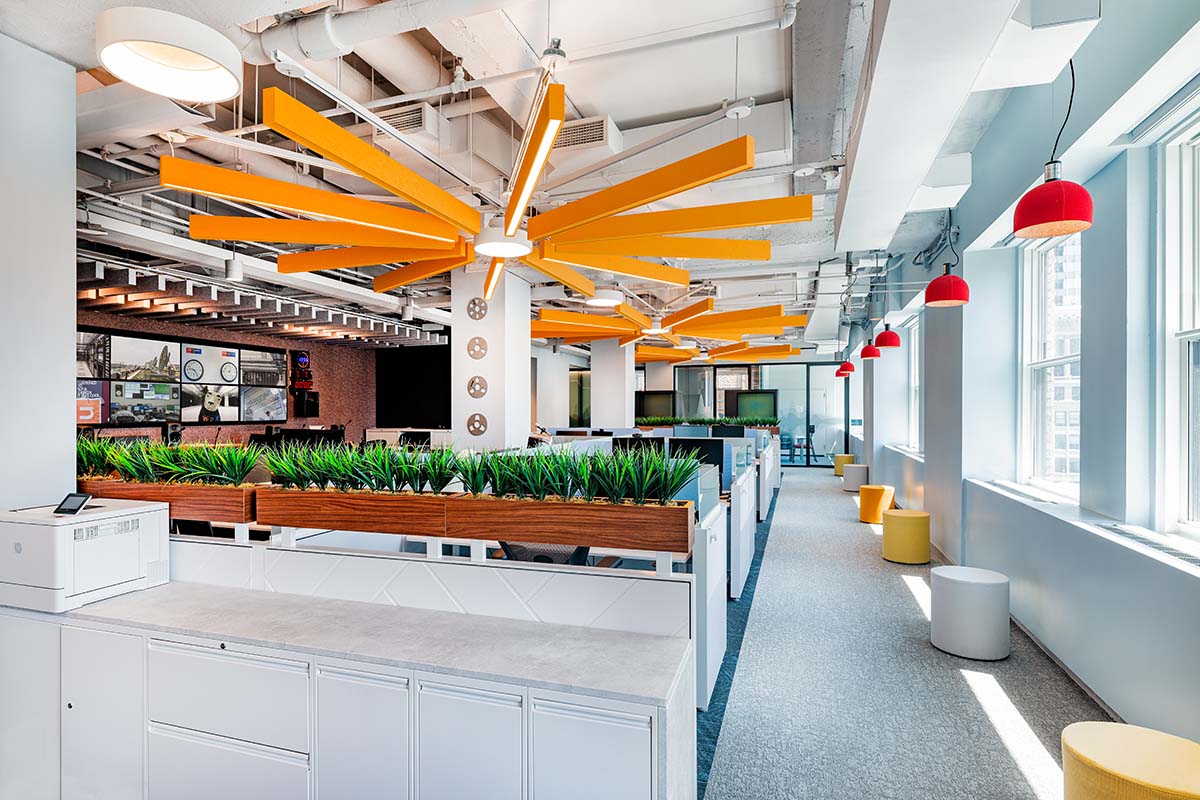
The spoke patterns were created using an alternating pattern of LS1 and NL baffles from Coronet LED’s STFU Acoustic Series. Photo © Giles Ashford, click to enlarge.
One of the standout features of the redesign is the ceiling installation in the open work area, where hot desks were added to accommodate hybrid NPR staff. Inspired by NPR’s mission to bridge local and global communities, Wright designed a striking spoke configuration that extends from one end of the space to the other. The installation, meant to symbolize NPR’s role as a crucial connector, incorporates an alternating pattern of Coronet LED’s No Light Baffles and LS1 fixtures from their STFU Acoustic Series. Made from 95% recycled PET with an NRC rating of 0.75, the baffles effectively dampen sound, enhancing acoustic comfort in the open work area. Meanwhile, the energy-efficient, Declare listed LS1 fixtures—also wrapped in recycled PET acoustic material—indirectly light the desks and workstations below. Wright specified custom red, black, blue, and yellow colors from NPR’s brand palette.
Wright carried the central spoke concept beyond the open office area into the VIP green room, creating a cohesive design language throughout the space.
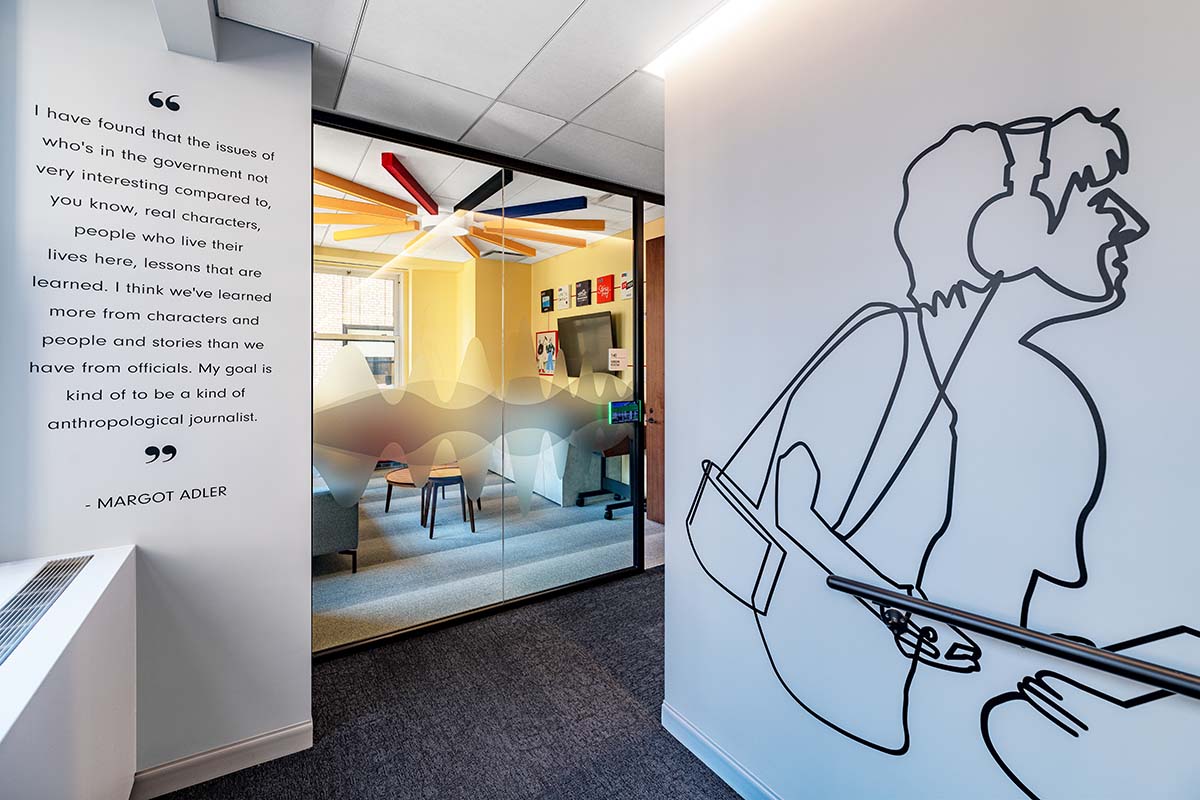
Coronet LED’s No Light Baffles in the VIP green room. Photo © Giles Ashford
NPR’s audio and video studios were another key focus of the office redesign. Wright worked closely with NPR’s production staff to ensure the spaces could accommodate various recording formats, including interviews and green screen setups. Coronet LED’s Magneto system proved ideal. The snap-in magnetic mounting allows for easy rearrangement of spot and linear lighting components, providing the flexibility and adaptability necessary for NPR’s dynamic production needs.
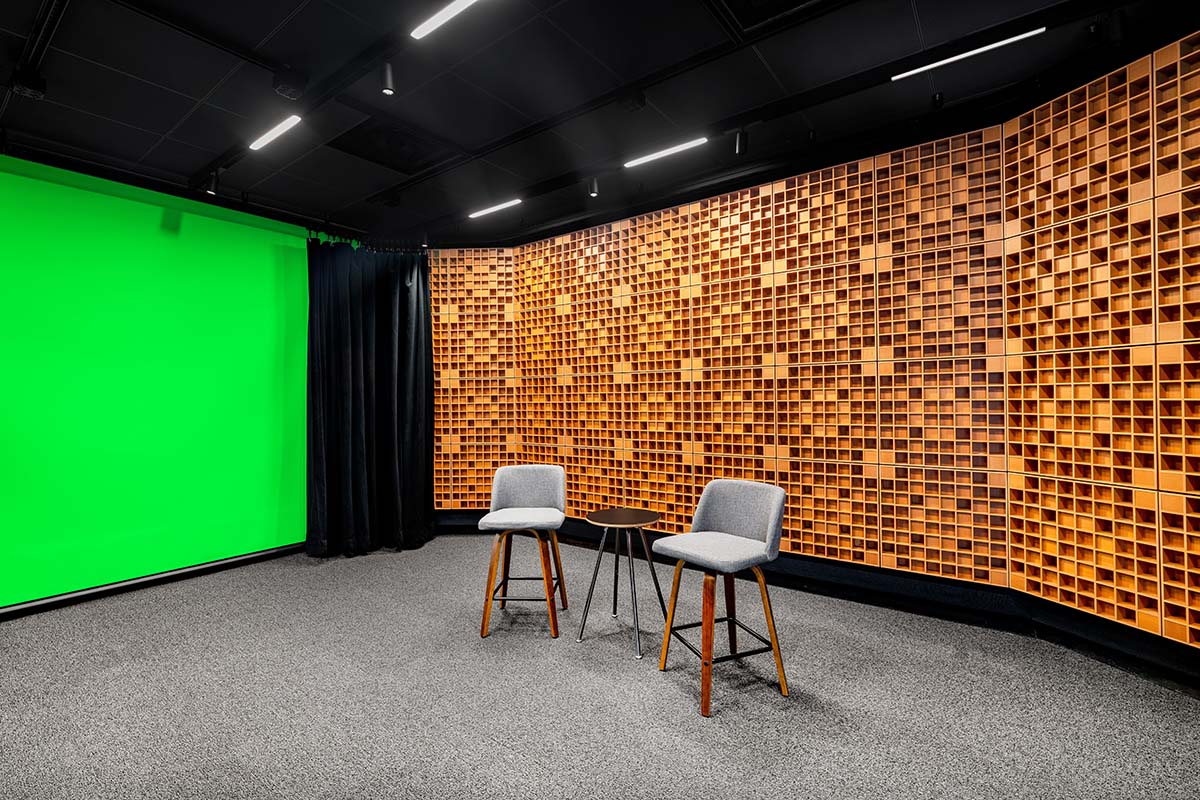
1
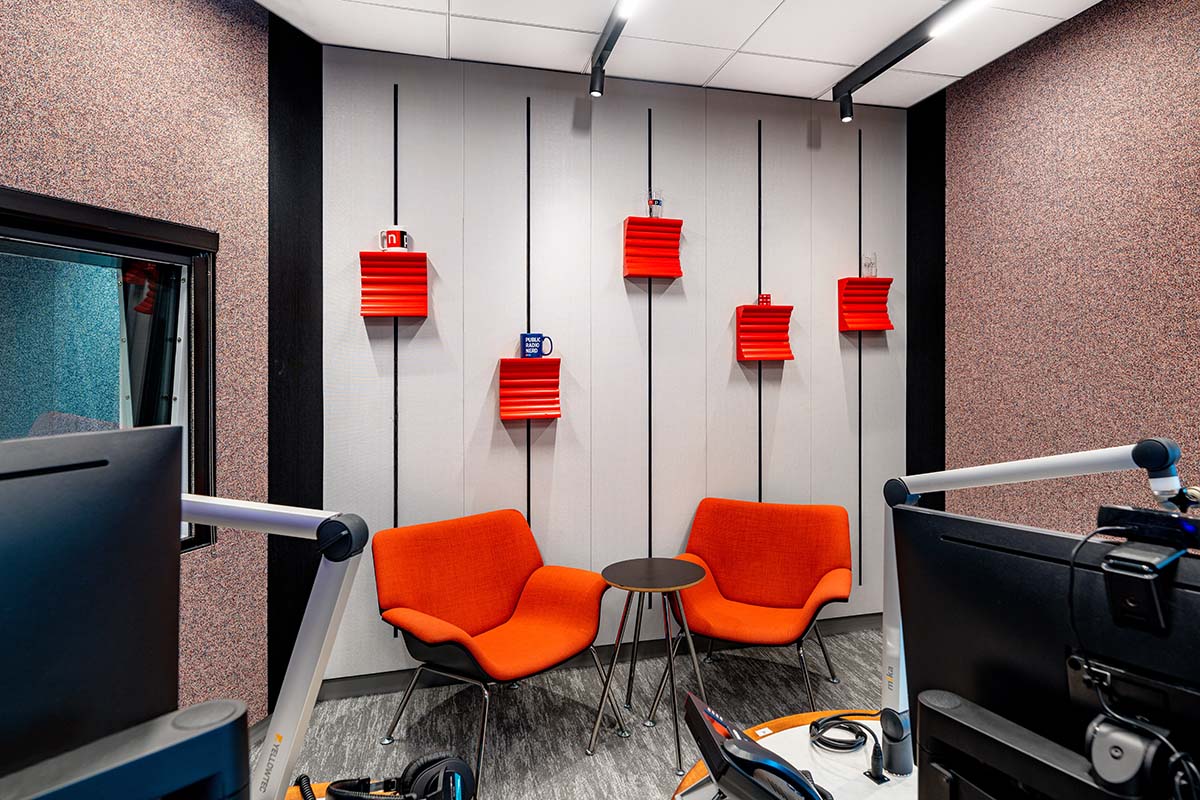
2
NPR’s video production studio (1) and recording studio (2) are outfitted with Coronet LED’s Magneto track system. Photos © Giles Ashford
The conference rooms—easily converted into breakout rooms using hidden room dividers—are equipped with Coronet LED's sleek LS1 fixtures. These fixtures, chosen for their minimalistic design and high-performance lighting, ensure even, glare-free illumination. Specified in a custom, royal blue color, the LS1 fixtures complement the gradient wall graphics at either end of the room.

The conference rooms feature Coronet LED’s LS1 fixtures in a custom color. Photo © Giles Ashford
In the hallways, Coronet LED’s Perimeter Glow fixtures wash the walls with light, illuminating archival illustrations. These fixtures are tailored to fit the unique contours of the space, with expertly welded corners that eliminate light leaks and ensure seamless illumination.


Photos © Giles Ashford
The renovation of NPR’s New York Bureau stands as a testament to the power of thoughtful lighting design. “At some point, it’s not even lighting anymore—it’s art,” noted Wright. “When you’re working with a supplier like Coronet LED who can provide fully custom solutions, anything is possible.”
By integrating Coronet LED’s lighting solutions, the project not only embodied NPR’s mission but also achieved the organization’s goals for a flexible and sustainable office. HLW, the architect of record, reviewed the products to ensure they met LEED Gold standards. As Wright reflects on the project, she concludes, “The integration of innovative lighting solutions with NPR’s design vision has resulted in a workspace that truly reflects the spirit of the organization, fostering both creativity and connectivity.”
Through thoughtful design elements and the strategic use of lighting technology, the redesigned NPR New York Bureau caters to the evolving needs of its employees, setting a new benchmark for how workspace design can reflect and advance organizational values.
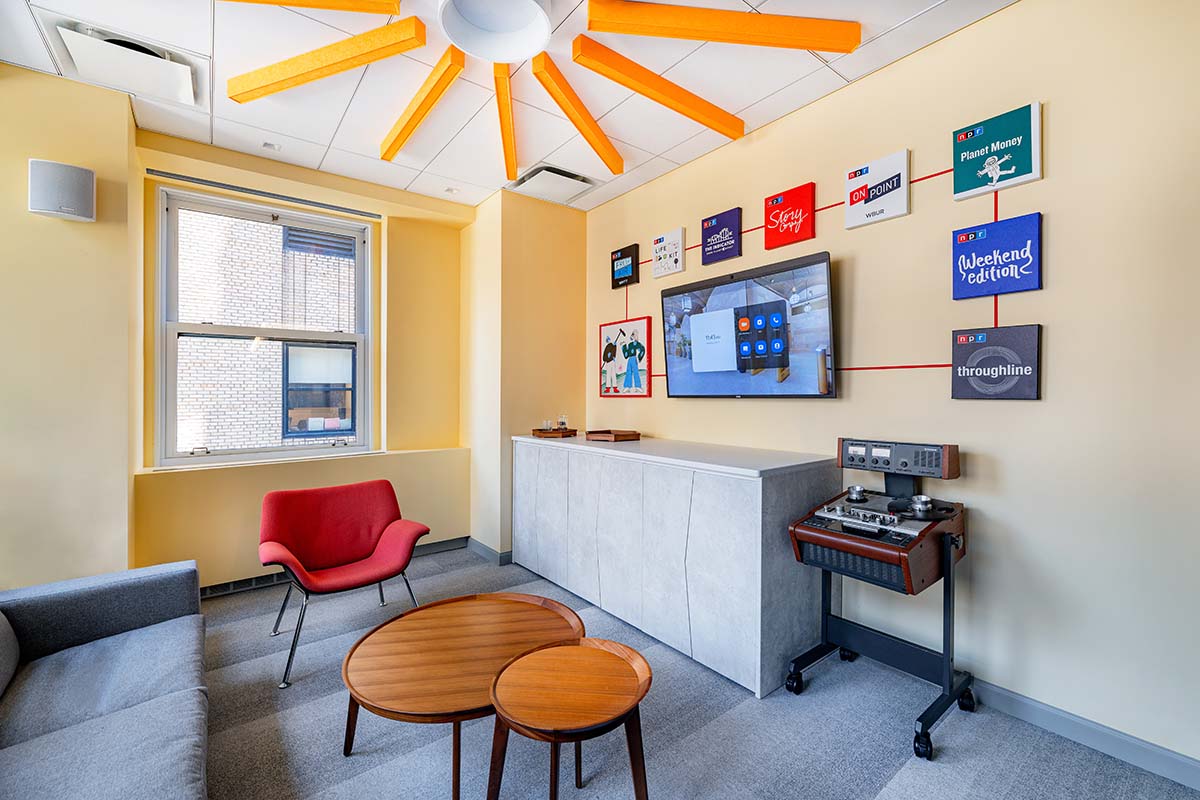
3
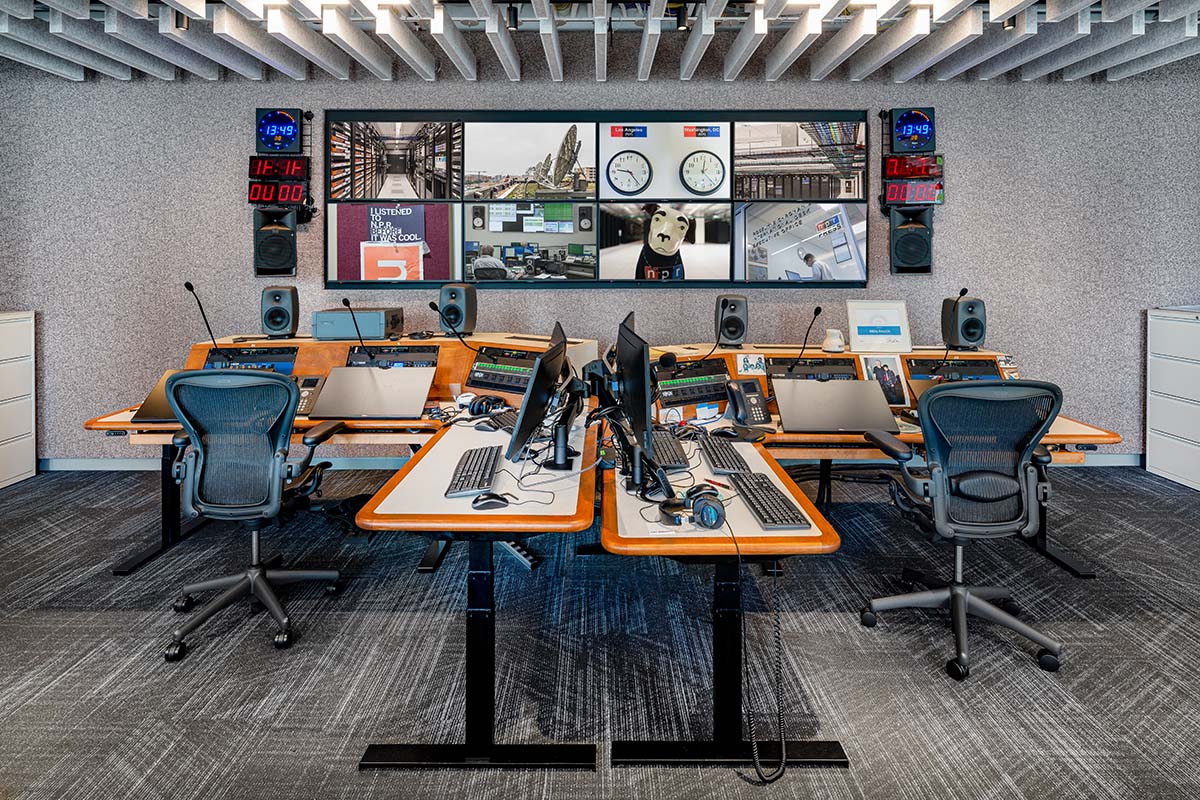
4
Coronet LED’s No Light Baffles dampen sound in NPR’s green rooms (3) and recording studios (4).
Photos © Giles Ashford
By Brian Thomas, Vice President of Marketing & Sustainability at Coronet LED.
Credits
Architect:
HLW
Interior Designer:
InsideWright
MEP Engineer:
Robert Derector Associates
AV/IT Engineer:
Robert Derector Telecommunications
Structural Engineer:
Silman
Contractor:
Benchmark Builders
Lighting Consultant:
Lighting Workshop
Acoustical Consultant:
Acoustic Distinctions
NPR Facilities Manager:
Leslie Holmes
Project Manager:
Cushman and Wakefield





